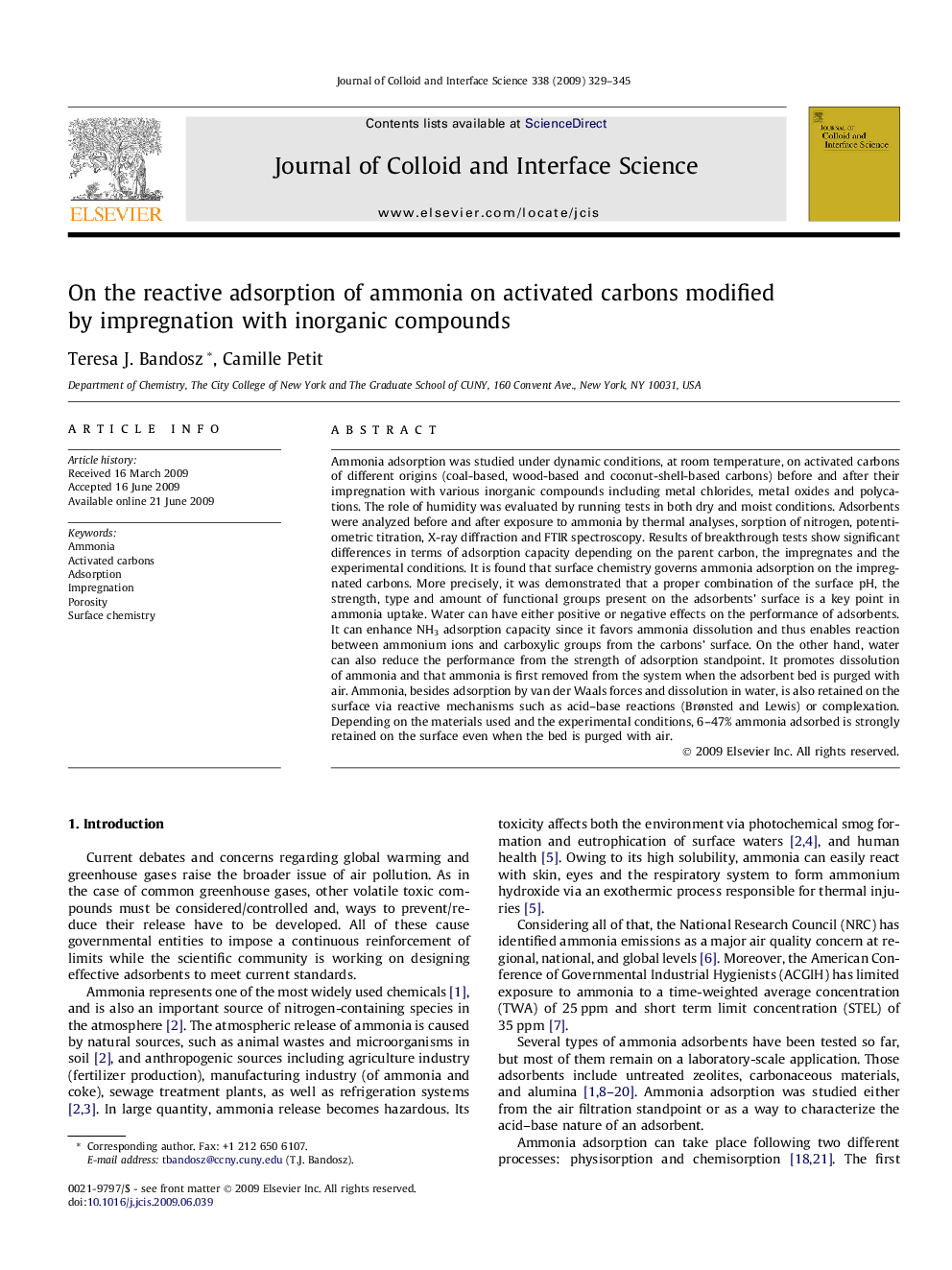| کد مقاله | کد نشریه | سال انتشار | مقاله انگلیسی | نسخه تمام متن |
|---|---|---|---|---|
| 610439 | 880649 | 2009 | 17 صفحه PDF | دانلود رایگان |

Ammonia adsorption was studied under dynamic conditions, at room temperature, on activated carbons of different origins (coal-based, wood-based and coconut-shell-based carbons) before and after their impregnation with various inorganic compounds including metal chlorides, metal oxides and polycations. The role of humidity was evaluated by running tests in both dry and moist conditions. Adsorbents were analyzed before and after exposure to ammonia by thermal analyses, sorption of nitrogen, potentiometric titration, X-ray diffraction and FTIR spectroscopy. Results of breakthrough tests show significant differences in terms of adsorption capacity depending on the parent carbon, the impregnates and the experimental conditions. It is found that surface chemistry governs ammonia adsorption on the impregnated carbons. More precisely, it was demonstrated that a proper combination of the surface pH, the strength, type and amount of functional groups present on the adsorbents’ surface is a key point in ammonia uptake. Water can have either positive or negative effects on the performance of adsorbents. It can enhance NH3 adsorption capacity since it favors ammonia dissolution and thus enables reaction between ammonium ions and carboxylic groups from the carbons’ surface. On the other hand, water can also reduce the performance from the strength of adsorption standpoint. It promotes dissolution of ammonia and that ammonia is first removed from the system when the adsorbent bed is purged with air. Ammonia, besides adsorption by van der Waals forces and dissolution in water, is also retained on the surface via reactive mechanisms such as acid–base reactions (Brønsted and Lewis) or complexation. Depending on the materials used and the experimental conditions, 6–47% ammonia adsorbed is strongly retained on the surface even when the bed is purged with air.
Ammonia adsorption on different activated carbons is enhanced by impregnation. The extent of this improvement depends on various parameters: the nature of parent carbon, type of impregnates and experimental conditions.Figure optionsDownload as PowerPoint slide
Journal: Journal of Colloid and Interface Science - Volume 338, Issue 2, 15 October 2009, Pages 329–345